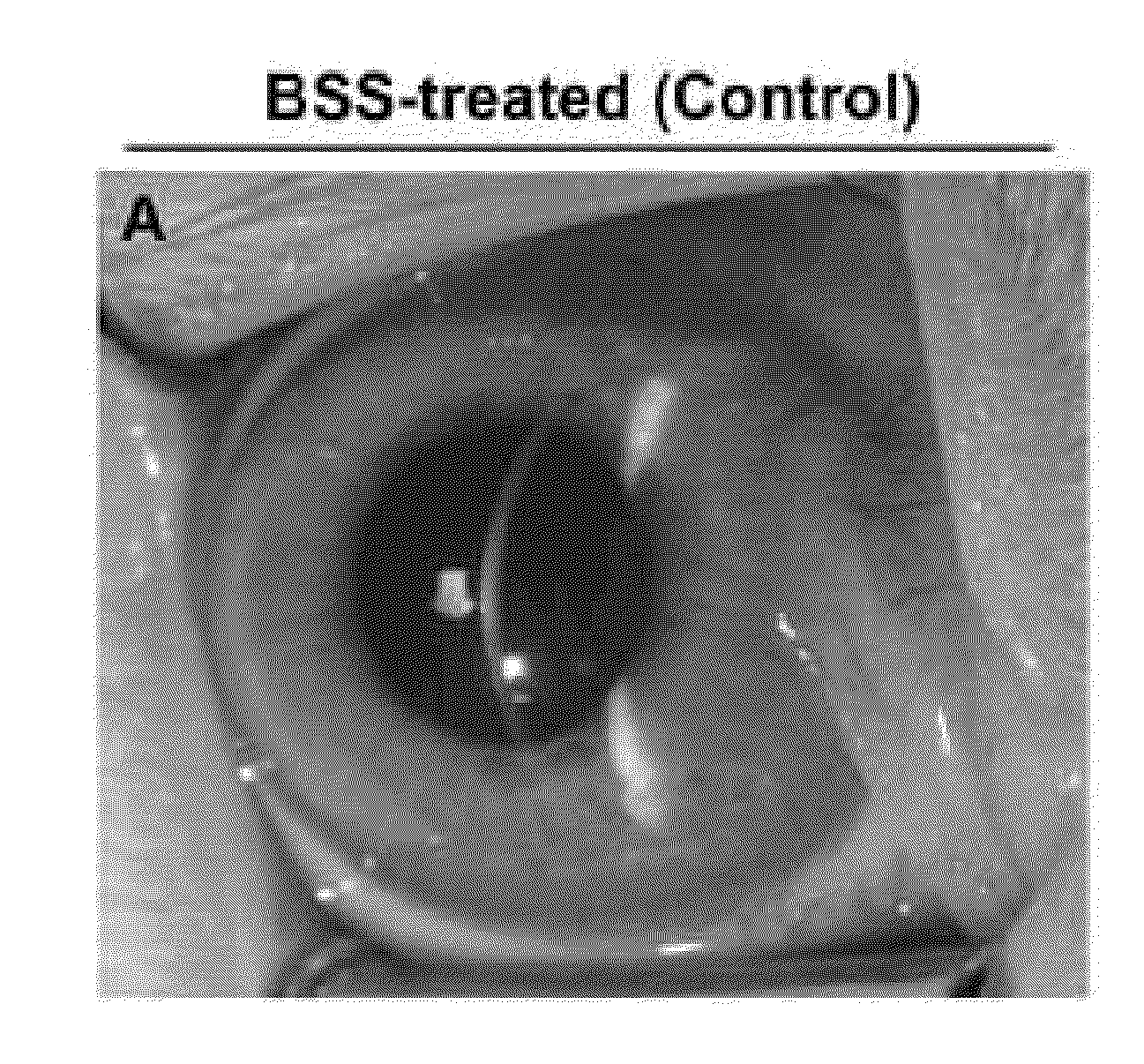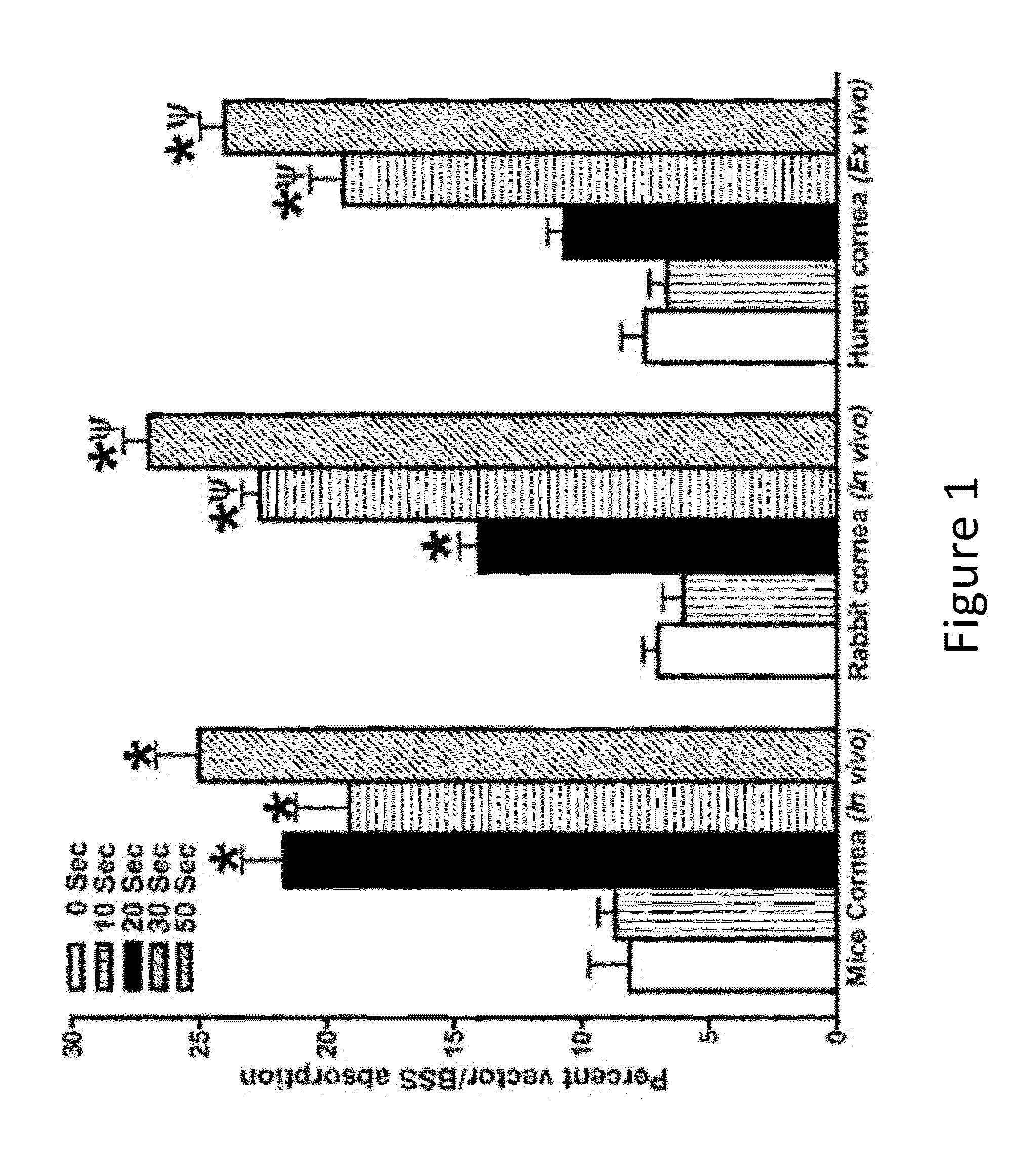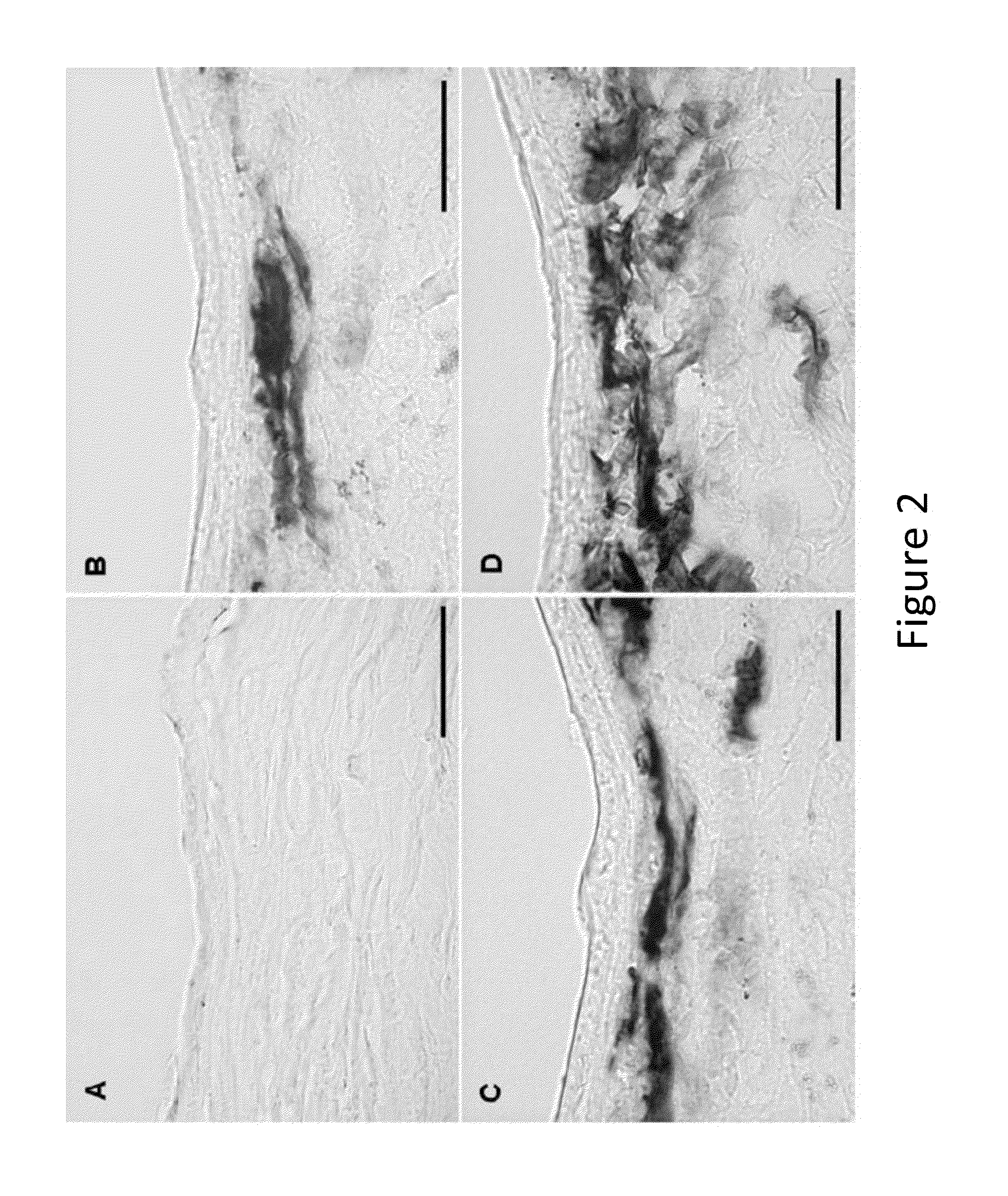Method of Tissue-Selective Targeted Gene Transfer
a targeted gene and tissue technology, applied in the direction of genetic material ingredients, peptide/protein ingredients, viruses/bacteriophages, etc., can solve the problems of many side effects, ineffective elimination of corneal scarring, and scarring of the cornea
- Summary
- Abstract
- Description
- Claims
- Application Information
AI Technical Summary
Benefits of technology
Problems solved by technology
Method used
Image
Examples
example 1
Material and Methods
[0084]In Vivo and Ex Vivo Model:
[0085]Six to eight week old female C57 mice (18-21 gms) and New Zealand White rabbits (2.5-3.0 kg) were used for in vivo studies. The donor human corneas procured from eye banks were used for ex vivo investigations. All animals and human corneas were treated in accordance with the tenets of the ARVO Statement for the Use of Animals in Ophthalmic and Vision Research and the declaration of Helsinki. Mice were anaesthetized with intramuscular injection of ketamine (130 mg / kg) and xylazine (8.8 mg / kg) whereas rabbits were anaesthetized by intramuscular injection of ketamine hydrochloride (50 mg / kg) and xylazine hydrochloride (10 mg / kg). Topical ophthalmic 1% proparacaine hydrochloride solution (Alcon, Ft. Worth, Tex.) was instilled in each eye for local anesthesia.
[0086]Topical Drying and Vector Delivery Technique:
[0087]The corneal epithelium of the mouse and rabbit corneas was removed by gentle scraping with a #64 Beaver blade (Becton...
example 2
[0111]A well-established laser-based experimental rabbit corneal scarring method was used to demonstrate proof of concept. The model cornea stroma was treated with decorin gene via tissue-selective targeted gene delivery. Decorin-treatment was evaluated based on biomicroscopic quantification, immunohistochemical determination, and immunoblot quantification of corneal fibrosis and found that tissue-selective targeted decorin gene delivery in the cornea with AAV5 significantly retards corneal fibrosis in vivo.
Materials and Methods
[0112]Animals
[0113]Twenty-four female New Zealand White rabbits (Myrtle laboratories Inc., Thompson's Station, Tenn.) weighing 2.5-3.0 kg were used in this study. The Institutional Animal Care and Use Committee of the University of Missouri-Columbia and Harry S. Truman Memorial Veterans' Hospital Columbia Mo. approved the study. All animals were treated in accordance with the Association of Research for Vision and Ophthalmology Statement for the Use of Animal...
example 3
Material and Methods
[0152]Animals:
[0153]The Institutional Animal Care and Use Committee of the University of Missouri-Columbia, Mo. USA USA (ID#4279 and 6487) and Harry S. Truman Memorial Veterans' Hospital Columbia, Mo. USA (ID#0041 and 0089) approved the study. Animals were treated in adherence to the principles of the ARVO Statement for the Use of Animals in Ophthalmic and Vision Research. New Zealand White rabbits (Myrtle laboratories Inc., Thompson's Station, Tenn.) weighing 2.5-3.0 kg were used in this study. Rabbits were anesthetized by intramuscular injection of ketamine hydrochloride (50 mg / kg) and xylazine hydrochloride (10 mg / kg) for performing PRK, VEGF-implantation, stereo- and slit-lamp biomicroscopy.
[0154]AAV5 Vector Generation
[0155]The AAV5 expressing green fluorescent protein gene (AAV5-GFP) titer produced at the Gene Therapy Vector Core Lab, University of Florida, Gainesville, Fla. was procured from Prof. Gregory S. Schultz and Dr. Vince A. Chido. Following an earl...
PUM
| Property | Measurement | Unit |
|---|---|---|
| volume | aaaaa | aaaaa |
| temperature | aaaaa | aaaaa |
| transparency | aaaaa | aaaaa |
Abstract
Description
Claims
Application Information
 Login to View More
Login to View More - R&D
- Intellectual Property
- Life Sciences
- Materials
- Tech Scout
- Unparalleled Data Quality
- Higher Quality Content
- 60% Fewer Hallucinations
Browse by: Latest US Patents, China's latest patents, Technical Efficacy Thesaurus, Application Domain, Technology Topic, Popular Technical Reports.
© 2025 PatSnap. All rights reserved.Legal|Privacy policy|Modern Slavery Act Transparency Statement|Sitemap|About US| Contact US: help@patsnap.com



